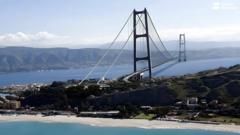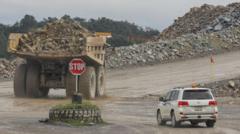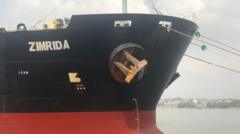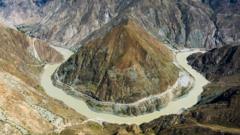The U.S. Interior Department's recent decision to review a proposal for seabed mining off American Samoa signals a pivotal moment in ocean exploitation.
U.S. Moves Forward with Controversial Seabed Mining Plans

U.S. Moves Forward with Controversial Seabed Mining Plans
The Interior Department prepares to assess a mining proposal off American Samoa amidst growing global tensions over resource rights.
This potential venture comes in the wake of an executive order from the Trump administration encouraging expedited approval for mining operations in both U.S. and international waters.
As demand for critical minerals like nickel, cobalt, and manganese rises—metals essential for emerging technologies—the U.S. finds itself in a unique position with disproportionate reliance on China for these resources.
The seabed contains valuable nodules that have incited interest, but concerns linger regarding the environmental implications of such mining. Notably, this move has provoked international discontent, as many nations contend that the U.S. lacks legitimate authority to mine in international waters without global consensus, as established by a United Nations treaty.
The prospect of seabed mining is further complicated by its technological challenges, as no commercial mining has been successfully executed thus far. Activists and governments are watching closely, voicing concerns about the precarious balance between resource extraction and environmental stewardship.
The conversation surrounding seabed mining continues to evolve, implicating significant geopolitical, environmental, and economic dimensions as the U.S. charts its path forward.
As demand for critical minerals like nickel, cobalt, and manganese rises—metals essential for emerging technologies—the U.S. finds itself in a unique position with disproportionate reliance on China for these resources.
The seabed contains valuable nodules that have incited interest, but concerns linger regarding the environmental implications of such mining. Notably, this move has provoked international discontent, as many nations contend that the U.S. lacks legitimate authority to mine in international waters without global consensus, as established by a United Nations treaty.
The prospect of seabed mining is further complicated by its technological challenges, as no commercial mining has been successfully executed thus far. Activists and governments are watching closely, voicing concerns about the precarious balance between resource extraction and environmental stewardship.
The conversation surrounding seabed mining continues to evolve, implicating significant geopolitical, environmental, and economic dimensions as the U.S. charts its path forward.






















